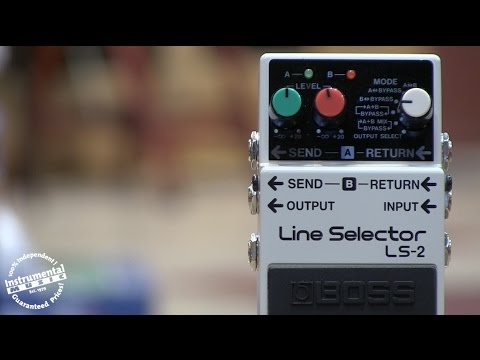You’re implying you want to blend two signals - those signals need to have been split somehow to begin with ![]()
Tyler takes an input, splits into two different send/return loops based on frequency cutoff, blends them and sends to output.
Tons of mixer pedals - recommend googling.
The LS-2 has two effects loops and has many line selection, combination and blend modes:
An ABY switch could also do the splitting for you. But an ABY splitting into two paths and then rejoining later seems less flexible than something like the LS-2 to me.
And all of this is a bit more complicated than I want my board to be. YMMV ![]()
Were I to buy any of this kind of thing it would be either the Tyler or the LS-2.

